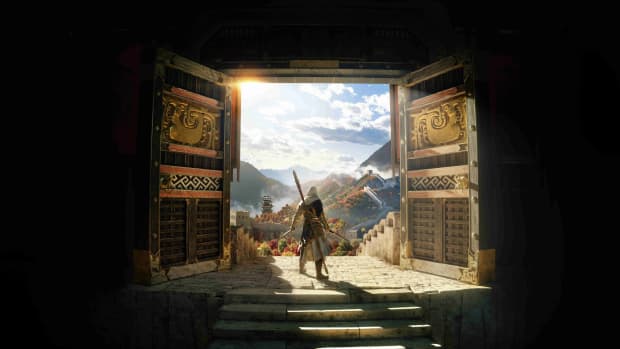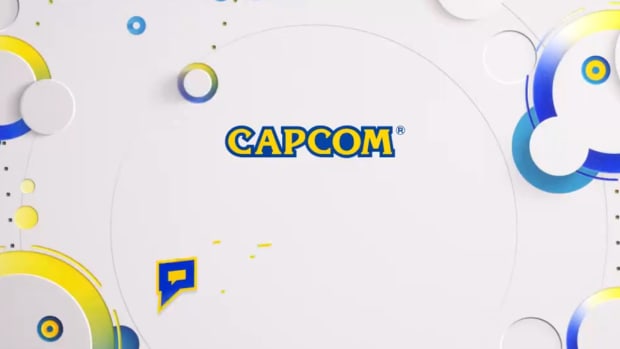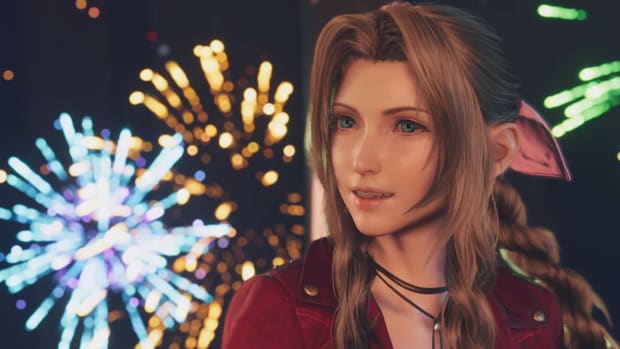Final Fantasy 7 Rebirth review – beyond expectations but doesn’t stick the landing
Final Fantasy 7 Rebirth opens with Cloud recounting his mission with Sephiroth as a young SOLDIER. As you explore his home village of Nibelheim, there are a bunch of actions you can take that prompt a response from your party, listening in during the present day.
One such action is rifling through childhood friend Tifa’s drawers. Another is climbing up Nibelheim’s water tower, which, along with the starry night sky above it, is seared into the mind of anyone who’s ever played Final Fantasy VII at least as much – if not more – as Cloud being a panty thief.
“How did it feel being back up there?” Tifa asks.
“I dunno… nostalgic, I guess,” he says.
He’s right.
Final Fantasy VII has me good. The PlayStation original was the first game to make me cry (if you must know, Red XIII’s Cosmo Canyon discovery) and was a world I retreated into when life was trash. I can’t remove myself from that context, which means I’m completely compromised. It means I’m a mark. A sucker. A chump. A fella whose stupid eyes leaked because a stupid dog statue cried.
It also means I would tear Rebirth to shreds if it messed up the legacy it’s built in my mind. Somehow, Tetsuya Nomura has returned. Not only is this a fine continuation of what the team did with FF7 Remake, but it also pushes that blueprint forward regarding narrative, mechanics, and world. It also does what Remake did and almost messes everything up right at the end. Nomura!
Remake set the tone and introduced the main characters, but Rebirth sends them on a proper journey spanning the entire planet. Sure, it’s a world made up of a series of self-contained open spaces – from vast deserts to dense jungles – but you rarely feel boxed in. It feels connected. It feels like a place where people live, made up of memorable villages, resorts, and shanty towns with their own culture and architecture, far removed from the steel sky of Midgar.
To support these wide spaces, you travel by Chocobo, truck, and through the skies at various points in the story. While on foot, there’s a new movement system for clambering over rugged terrain, which helps to make the spaces feel less like a collection of linear corridors than in Remake. See that cliff? You can probably clamber up it. What a sell.
What fills these open sections is pretty standard – it’s essentially the Ubisoft approach to open-world design, viewpoint tower-shaped warts, and all – but you’ll find yourself doing it all just to spend more time with your friends.
Almost every throwaway quest you do is tied to one of your companions. A quest about picking flowers, for example, becomes an excuse to spend time with Aerith and is made more engaging by having you identify the correct flowers from drawings, with accurate choices giving you the most Friend Points (they’re not called this).
The original game had a hidden statistic that tracked who you spent the most time with, and that impacted a big moment in the story later on. Rebirth clarifies exactly what effect you have on your party members whenever you complete a side mission or choose from one of many dialogue response options. You’re never changing the story in a major way, but it gives you more autonomy over who you want to grow closer to in an almost BioWare-lite style. It makes you feel more invested.
This is backed up by stellar characterizations of established personalities, as well as some truly brilliant writing. I love the way Cloud leans on one leg and puts his hand on his hip, or how Barret shakes his arm off to deal with the fact he’s got a damn cannon strapped to it. There’s a moment later on in the story where Cloud, Tifa, and Barret take a fall, and the way each of them lands says so much about their character – Barret on his back, Tifa bending her knees, and Cloud doing his best Spider-Man impression so his goofy ass looks cool (in his mind, at least). This is the kind of thing that modern visual fidelity brings to a story originally told with text boxes and polygonal shrugs.
Rebirth’s heart is in that fantastic character work – the way Tifa says “wow” when she sees Barret in his sailor’s outfit, or how a passing NPC tells their kid that Red XIII pretending to be a human “can’t hurt you”. Between the impending calamity, Sephiroth, and corporations ruling the world with a private army, Final Fantasy 7 Rebirth never fails to remind you what – or, more appropriately, who – you’re fighting for.
I even appreciated how well it dances the line between a straight remake and keeping you on your toes. It does a great job of playing with what it means to be a retelling of a story you already know – and what is destiny if not a story you already know?
One unfortunate side effect of this is how your knowledge of the story can impact specific characters. We saw this a bit in Remake, which spoiled the mystique of Sephiroth by having him show up every few hours. Here, Bugenhagen becomes a victim of fate – Red XIII’s mentor in the original game is a wise old man who teaches you about the nature of the universe. In Rebirth, he’s naive, and his age has made him grow stale – as the player, you know way more than he ever will. He has nothing to show you about the world. Go float away on your little ball, you old codger. Mind you, at least we know that wasn’t his skin now.
Then, on the other side of this excellent action RPG, some of the more memorable parts of the original game are improved beyond my wildest imagination. The Junon parade, the Nibelheim flashback, the Gold Saucer, and Costa del Sol are all expanded upon in imaginative, brilliant ways. It recaptures that feeling of the original game, which often felt like the developers had dozens of wild ideas and somehow found a way to get all of them into the finished product. There are loads of minigames, from a deep and strategic card battler to riffs on Rocket League and Fall Guys. Some are better than others, but they make Rebirth feel similar to a Yakuza (Like A Dragon) game in terms of scope and breadth. It’s just a shame the team took the same kitchen-sink approach to the final hours, which takes the same approach and leaves you feeling confused and empty as the credits roll. But at least they roll to some beautiful music.
The reworked dynamic soundtrack remixes classic themes and twists them up to suit the mood, making them melancholy one minute and exciting the next, depending on the situation. It’ll be remembered as one of the best OSTs in the entire series, and I’ll always be ready to mash square when I hear that battle riff.
Combat is mostly unchanged from Remake, aside from the introduction of new party members in Red XIII and Cait Sith (in addition to Intergrade’s Yuffie), as well as a range of synergy attacks and some free elemental moves. The latter does undermine Materia – the magical orbs you equip to use spells – somewhat, as you don’t need to think as deeply about equipping your party for every possible weakness because you generally have access to every element for free somewhere in your abilities list anyway, but it’s not a massive issue because a big fireball from leveled-up Materia always hits harder. One big improvement is the introduction of perfect blocks – time a guard right and you’ll negate any damage, which adds a new layer of skill to combat and makes you take the block button way more seriously in big fights.
In almost every way you can look at it, Rebirth is a huge improvement over Remake. It constantly surprises you with how far it’s willing to go to recreate the moments you love, and even a poor ending can’t undermine the incredible 100 hours it took me to get there. Some of the open-world stuff starts to drag toward the end – especially in regions where the topography is more complex and hoofing it around is like trying to find your way out of the backrooms – but most of that’s optional anyway. I did it because I felt rewarded with special character moments that expanded upon the original game’s relationships in meaningful ways. I don’t know where Square Enix will take things from here, but I’ll be ready to mosey.
Score: 9/10
- Combat: 10/10
- Story: 8/10
- Visuals: 9/10
- Music: 10/10
Version tested: PS5








